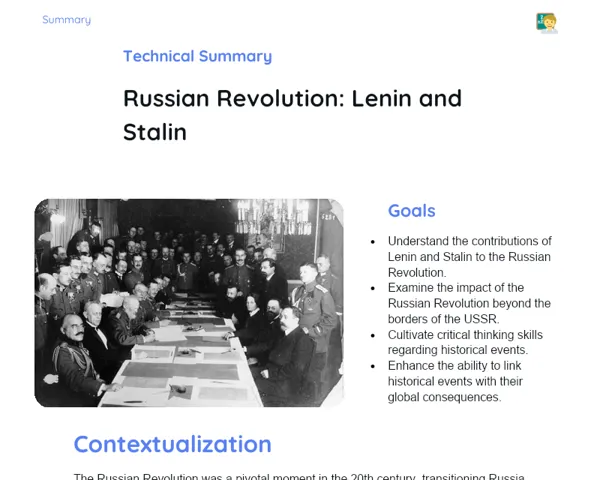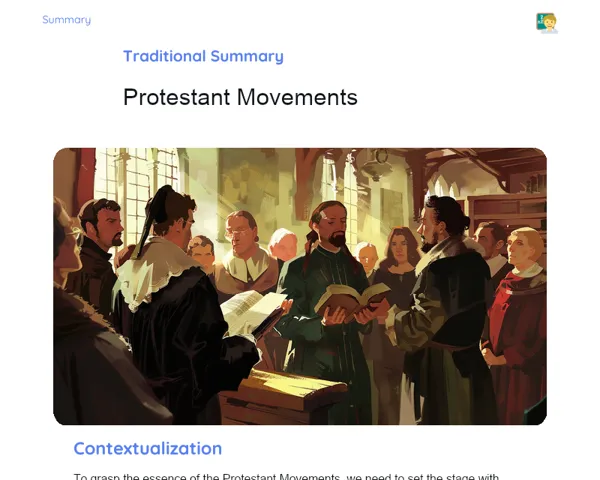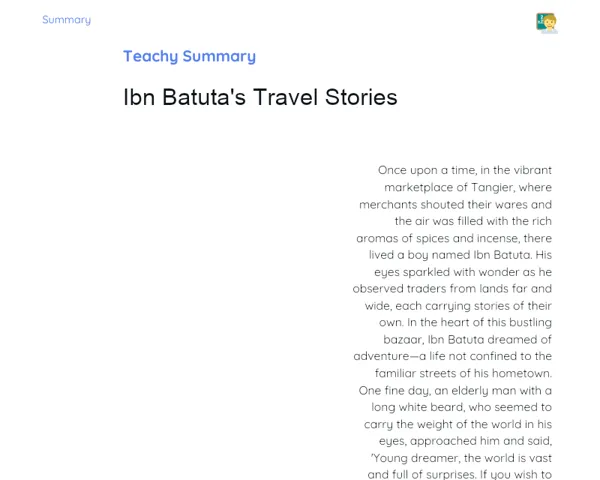Goals
1. Understand the political and territorial organization of the Italian and German States in the 19th century.
2. Analyze the main historical events that led to the unification of these States.
3. Identify the key personalities and political movements involved in the Italian and German unifications.
4. Relate the unification processes to the broader European context of that era.
Contextualization
The Italian and German Unifications in the 19th century were significant milestones in the creation of modern States in Europe. Driven by a mixture of political, social, and economic factors, these unifications fundamentally shifted the map of Europe. In Italy, leaders like Giuseppe Garibaldi and Camillo di Cavour played pivotal roles, whereas Otto von Bismarck spearheaded the German unification. Understanding these remarkable events is essential as they illuminate how nationalist movements have shaped borders and identities that continue to affect global politics today.
Subject Relevance
To Remember!
Historical Context of Europe in the 19th Century
The 19th century in Europe was marked by significant political, social, and economic upheaval. The Industrial Revolution transformed the economic and social landscape of many European nations. At the same time, nationalism gained momentum, fuelling unification efforts in both Italy and Germany. These dynamics created a fertile ground for the emergence of modern nation-states.
-
Industrial Revolution: Major economic and social shifts.
-
Nationalism: Rise of nationalist sentiments as a potent political driver.
-
Political Transformations: Fall of empires and the rise of nation-states.
Key Figures of the Italian Unification
The unification of Italy was championed by prominent figures including Giuseppe Garibaldi, Camillo di Cavour, and Victor Emmanuel II. Garibaldi, a revolutionary leader, orchestrated the Expedition of the Thousand, a critical military campaign. Cavour, serving as Prime Minister of the Kingdom of Sardinia, masterfully employed diplomacy to bring together the Italian States. Victor Emmanuel II became the first king of a unified Italy.
-
Giuseppe Garibaldi: Leader of the Expedition of the Thousand.
-
Camillo di Cavour: Diplomat and strategic mind behind the unification.
-
Victor Emmanuel II: First king of the unified Italy.
Key Figures of the German Unification
The German unification was primarily driven by Otto von Bismarck and William I. As the Prime Minister of Prussia, Bismarck implemented the 'iron and blood' policy, employing strategic wars, including the Austro-Prussian War and the Franco-Prussian War, to unify the German States. William I was proclaimed the first emperor of the newly formed German Empire.
-
Otto von Bismarck: The chief architect of German unification.
-
William I: The inaugural emperor of the German Empire.
-
Franco-Prussian War: A critical conflict leading to unification.
Practical Applications
-
Analysis of International Conflicts: Professionals in International Relations leverage the study of unifications to decode modern conflicts and alliances.
-
Legislation and Public Policies: Lawyers and policymakers draw upon historical insights to craft more effective legislation.
-
Education: Teachers and academics utilize historical case studies of unification to convey lessons about state formation.
Key Terms
-
Italian Unification: The process of merging various Italian states into a single nation, steered by leaders like Garibaldi and Cavour.
-
German Unification: The effort to unify the German states under the auspices of Prussia and Otto von Bismarck.
-
Nationalism: An ideology fostering national unity and self-determination.
-
Risorgimento: A cultural and political movement that greatly influenced Italian unification.
-
Franco-Prussian War: A conflict between France and Prussia that catalyzed the German unification.
Questions for Reflections
-
How did the unification movements in Italy and Germany contribute to the making of modern states in Europe?
-
What similarities and differences can be drawn between the Italian and German unification processes?
-
In what ways did individual leaders like Garibaldi and Bismarck shape their respective unification journeys?
Drawing History
Create an interactive map that illustrates the territorial changes before and after the Italian and German unifications.
Instructions
-
Break into groups of 4-5 students.
-
Choose between the Italian unification and the German unification.
-
Research and sketch a map of Europe prior to the unifications, marking the significant states and territories.
-
Draw a map depicting Europe after the unifications, highlighting the territorial alterations.
-
Add captions and explanatory notes regarding the key events and figures involved.
-
Present your map to the class, explaining the changes that took place and their implications.



